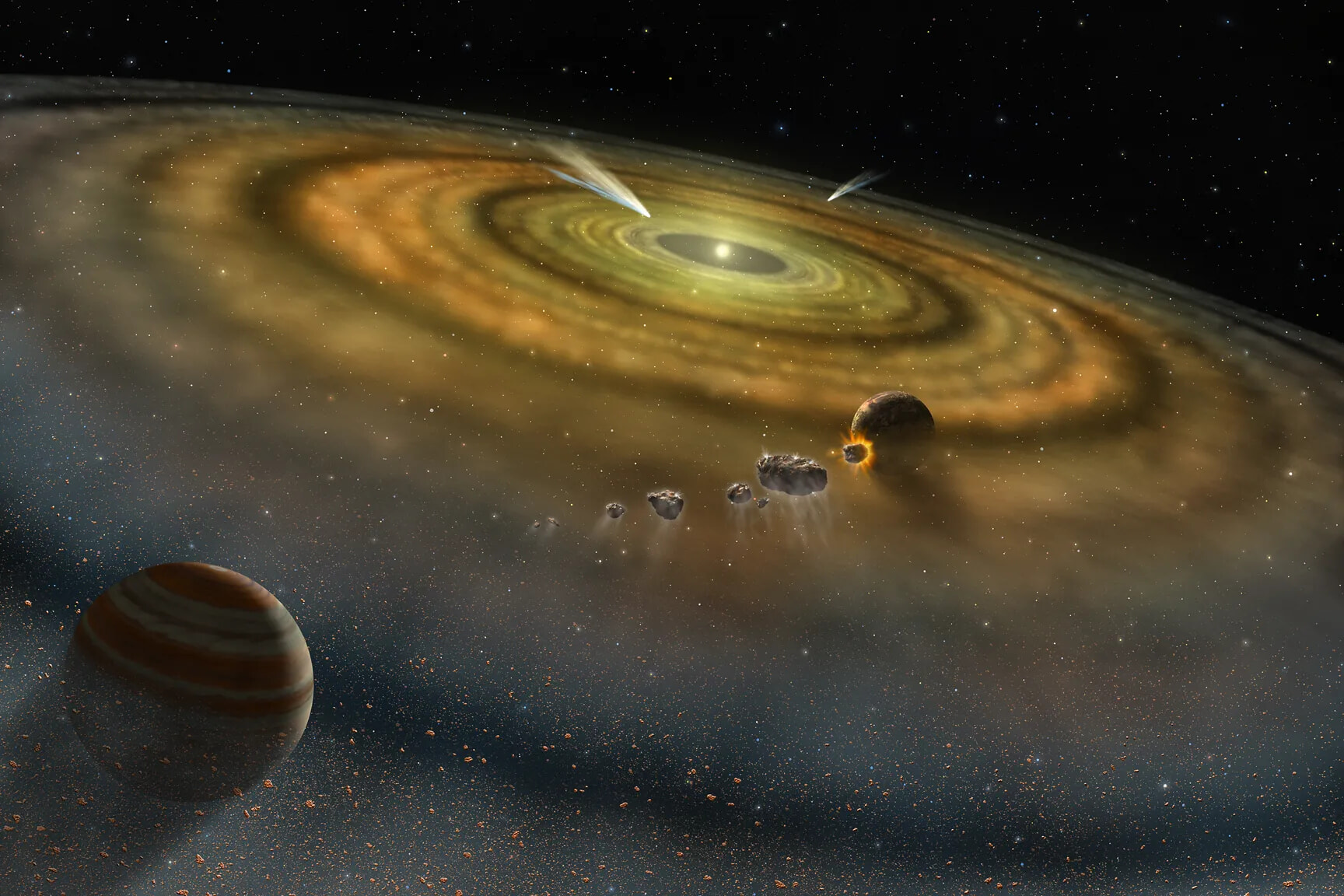
Astronomers Have Witnessed a New Solar System Being Born For the Very First Time
Whoa.
Published July 25, 2025
Advertisement
Advertisement
1. A Glimpse into Cosmic Beginnings
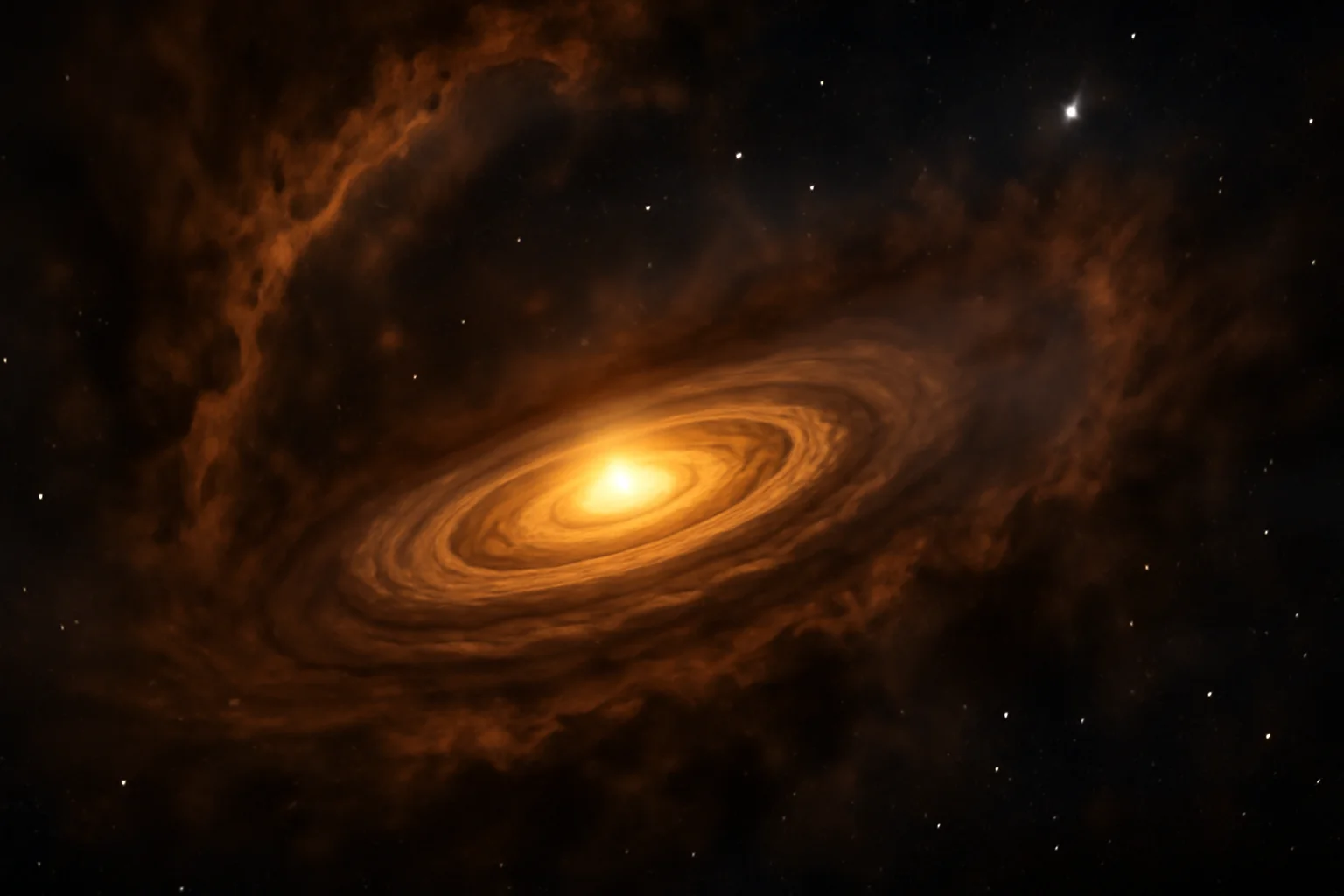
In a stunning breakthrough, astronomers have, for the first time, witnessed the very birth of a new solar system as it unfolds around a young star named HOPS-315.Located 1,300 light-years away in the constellation Orion, HOPS-315 sits within a dense molecular cloud where stars are born from swirling gas and dust.Using the combined power of the James Webb Space Telescope (JWST) and the Atacama Large Millimeter/submillimeter Array (ALMA), scientists were able to peer through a rare gap in the gas cloud, capturing an unprecedented view of early planetary creation.This is no ordinary discovery—astronomers are now observing the earliest solid materials as they condense from hot gases, the first step in a chain reaction that will eventually give rise to planets.While previous observations have spotted fully-formed exoplanets or planetary embryos, no one has ever pinpointed the exact moment when planet formation begins outside our solar system.Lead researcher Melissa McClure describes this achievement as identifying the precise starting line for building worlds, something once thought unattainable.Co-author Merel van ‘t Hoff likens it to holding a photograph of our own solar system when it was just beginning to form, a powerful analogy that underscores the magnitude of this scientific leap.The observed process is believed to closely mirror the events that set our own cosmic neighborhood in motion more than 4.5 billion years ago.By detecting specific chemical signatures—like silicon monoxide—scientists have confirmed that the essential building blocks of rocky planets are now forming in real time around HOPS-315.This marks a critical new chapter in the story of planetary genesis, illuminating mysteries that have puzzled astronomers for generations.With this discovery, the door is open to understanding how not just our solar system, but countless others across the universe, might come to life.
Advertisement
2. The Baby Star That Changed Everything
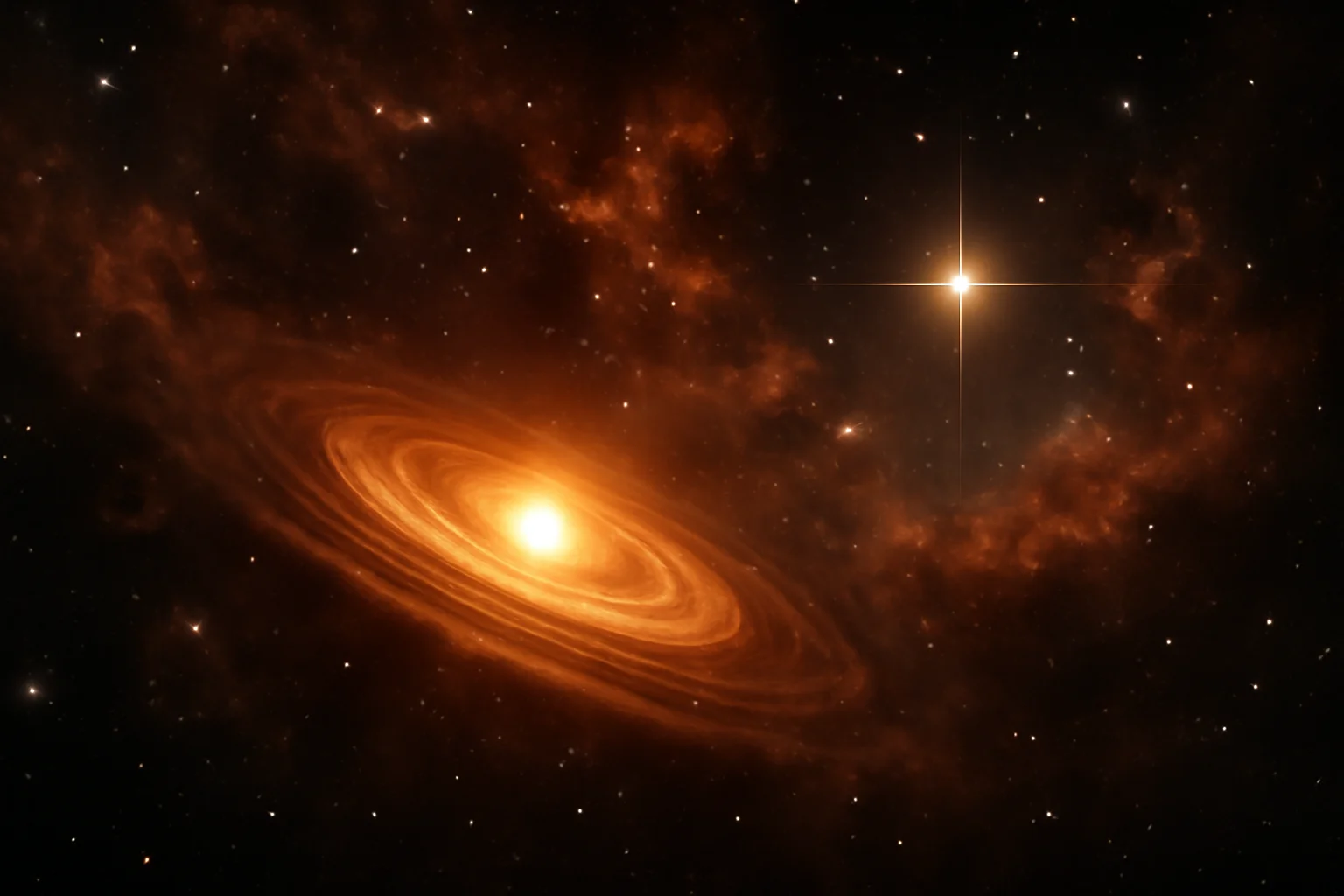
HOPS-315, a so-called “proto” star, is barely 150,000 to 200,000 years old—a cosmic infant in a galaxy filled with mature stars and ancient worlds.It resides deep in Orion B, a region teeming with stellar nurseries where gravity molds clouds of gas into the next generation of suns.Surrounding this baby star is a dense envelope of gas and dust, but astronomers lucked into a unique vantage point: a break in the envelope, perfectly aligned for telescopic study from Earth.Within this protected cocoon, astronomers saw the first hints of planet-forming minerals condensing—tiny but essential clues to the process that will sculpt planets, moons, and asteroids over millions of years.ALMA’s high-resolution imaging revealed a butterfly-like distribution of gas, with vibrant jets of silicon monoxide and carbon monoxide streaming from the core.The chemical “fingerprints” observed closely match the kinds of high-temperature materials found in ancient meteorites here on Earth, cementing the link between HOPS-315’s protoplanetary disk and the birth of our own solar system.These observations are not just snapshots of a distant system—they are a window into how Earth and its planetary siblings likely began, set in motion by similar cosmic chemistry.With each pixel, astronomers trace the outlines of cosmic history, connecting HOPS-315’s present to our planetary past.Lead scientist McClure emphasizes that never before have we identified this earliest moment of planet formation so clearly, even in the most studied stellar nurseries.This discovery makes HOPS-315 a Rosetta Stone for planetary science, a touchstone to decode the timeline of our solar system and many others.By studying this baby star, researchers hope to build a universal model for how planets are born in the chaos and heat of their stellar cradles.
Advertisement
3. The Tools That Opened the Universe
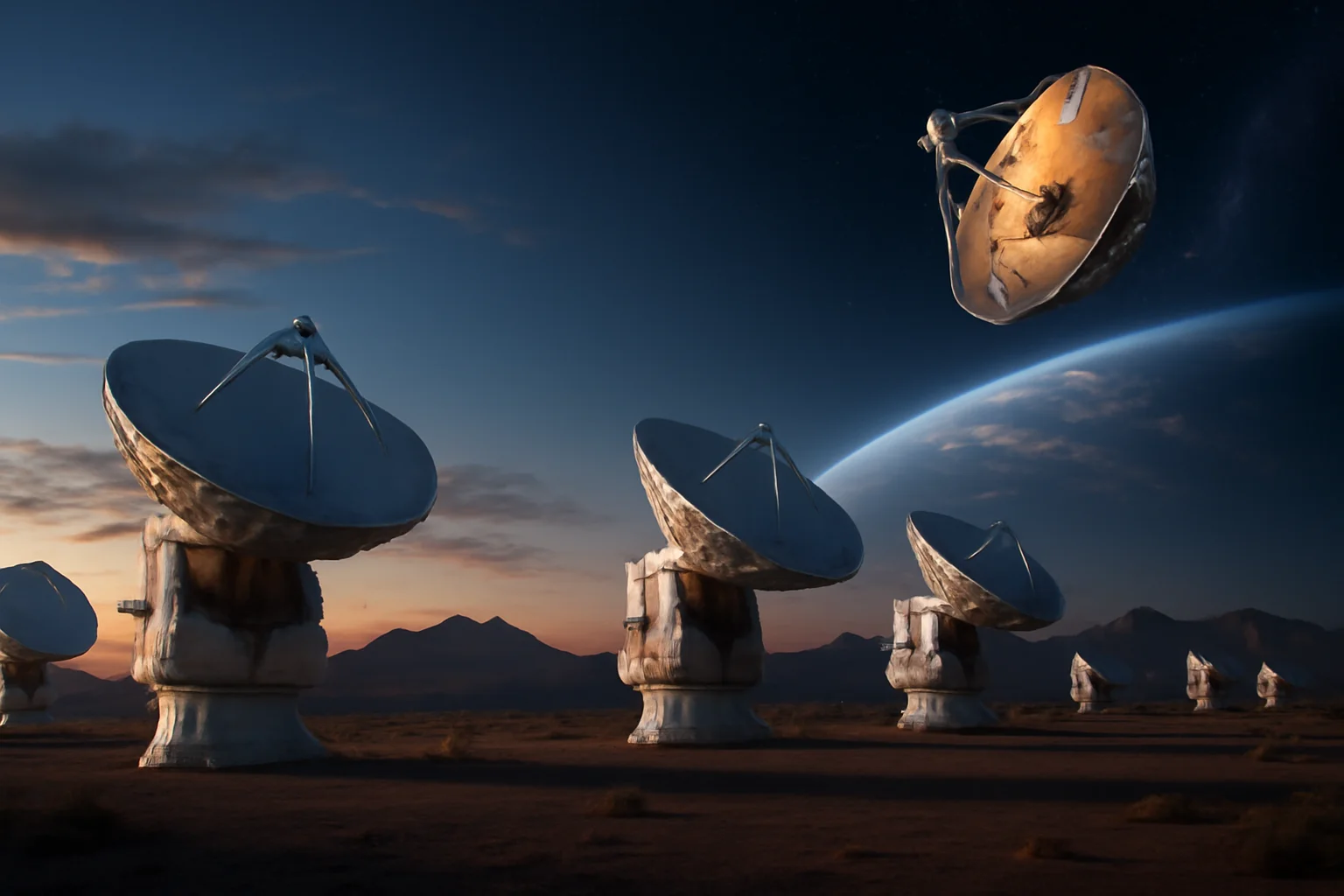
Unlocking the secrets of HOPS-315 required a marriage of cutting-edge technology and international collaboration.The Atacama Large Millimeter/submillimeter Array (ALMA), perched high in Chile’s Atacama Desert, offered astronomers the ability to probe the cold dust and gas swirling around the young star with exquisite detail.Meanwhile, the James Webb Space Telescope (JWST), orbiting far above Earth, delivered high-resolution infrared views that pierced the star’s dusty cocoon to reveal the chemical ingredients of planet formation.By combining ALMA’s view of the millimeter-wavelength sky with JWST’s sensitive infrared sensors, scientists captured the interplay of heat, chemistry, and motion as planets begin to take shape.It’s this powerful synergy—two telescopes, working in tandem across continents and orbits—that made the breakthrough possible.Scientists from eight institutions across five countries contributed, harnessing decades of engineering and expertise to synchronize their observations.The result is a first-of-its-kind, multi-wavelength “movie” of planetary birth, combining the sharpest images with the most detailed chemical maps ever achieved.With these tools, researchers detected not only silicon monoxide in gaseous form but also found the first traces of crystalline silicates, the essential “seeds” for growing rocky worlds.The chemical signals were pinpointed to a region of the disk roughly the size of our own asteroid belt, reinforcing the cosmic parallel between HOPS-315 and the young Sun.The success of this campaign demonstrates the extraordinary promise of new observatories and global partnerships to rewrite what we know about the universe.Armed with this technology, scientists stand ready to chase the story of planet formation wherever it unfolds among the stars.
Advertisement
4. Chemistry of Creation

At the heart of planet formation lies chemistry, where extreme heat forges raw elements into the first mineral grains.In the swirling protoplanetary disk around HOPS-315, the JWST and ALMA detected key markers: silicon monoxide gas and crystalline silicate minerals.These are the same types of compounds found in ancient meteorites that once orbited the Sun as part of the primordial solar nebula.Such minerals—formed at temperatures above 1,300 Kelvin—represent the first solid matter to appear in a solar system, the true beginning of planetary assembly.Their presence signals that the clock of planet formation has started, as these crystals will soon clump together under gravity to build kilometer-sized planetesimals.Over time, these planetesimals can become the seeds of rocky planets, gas giants, or icy worlds, depending on their location within the disk.In our own solar system, these same minerals mark the start of a timeline stretching back more than 4.5 billion years, a record preserved in the oldest meteorites.The alignment of chemical signals in HOPS-315’s disk and those found in our ancient rocks provides strong evidence that planetary creation follows universal rules.It’s this chemical “bridge” between the early solar system and HOPS-315 that gives astronomers new confidence in their models of how planets form.The snapshot captured here is not just about distant space—it is a mirror reflecting our own origins, etched in stardust and stone.By mapping the chemistry of creation, scientists can now track the journey from stardust to planets, building a new foundation for cosmic discovery.
Advertisement
5. The Dawn of Planetesimals
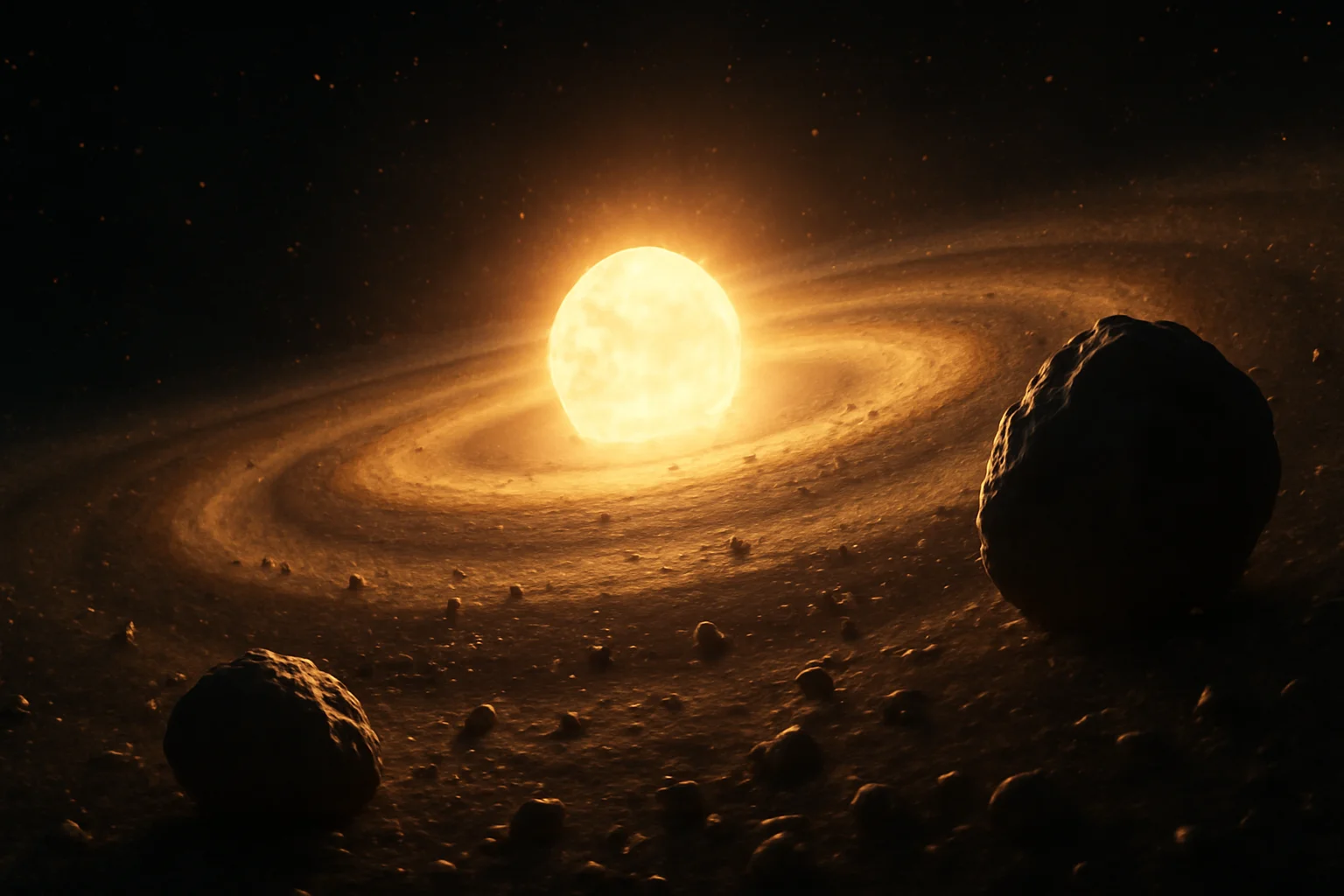
With the first solids forming around HOPS-315, astronomers have finally witnessed the earliest seeds of planets taking root.This process begins as hot gas cools and condenses, forming tiny crystals that collide, stick, and gradually grow into larger pebbles and boulders.Gravity becomes the architect, pulling these fragments together until they reach critical mass as kilometer-sized “planetesimals,” the basic building blocks of all planets.In the solar system, evidence of this process comes from meteorites called chondrites, which preserve calcium-aluminium-rich inclusions (CAIs) dating back to the dawn of planetary assembly.By studying these ancient relics, scientists can reconstruct the temperature, pressure, and chemical environment of the Sun’s earliest days.The new data from HOPS-315 reveal similar conditions, with the first solids condensing just twice as far from the star as Earth orbits the Sun.Researchers estimate this phase lasts only about 160,000 years—a cosmic blink—making it incredibly rare to catch in action.Finding it now in a young star so far away confirms that planet-building follows predictable steps across the galaxy.As planetesimals grow, they sweep up more material, eventually forming full-fledged planets, moons, and the debris belts that circle young stars.This dynamic, violent process sets the stage for everything to come—worlds, atmospheres, and perhaps even the preconditions for life.With this real-time glimpse, scientists can finally piece together the timeline of planet birth, refining theories that stretch from Earth to the edge of the cosmos.
Advertisement
6. Time Capsules from the Past
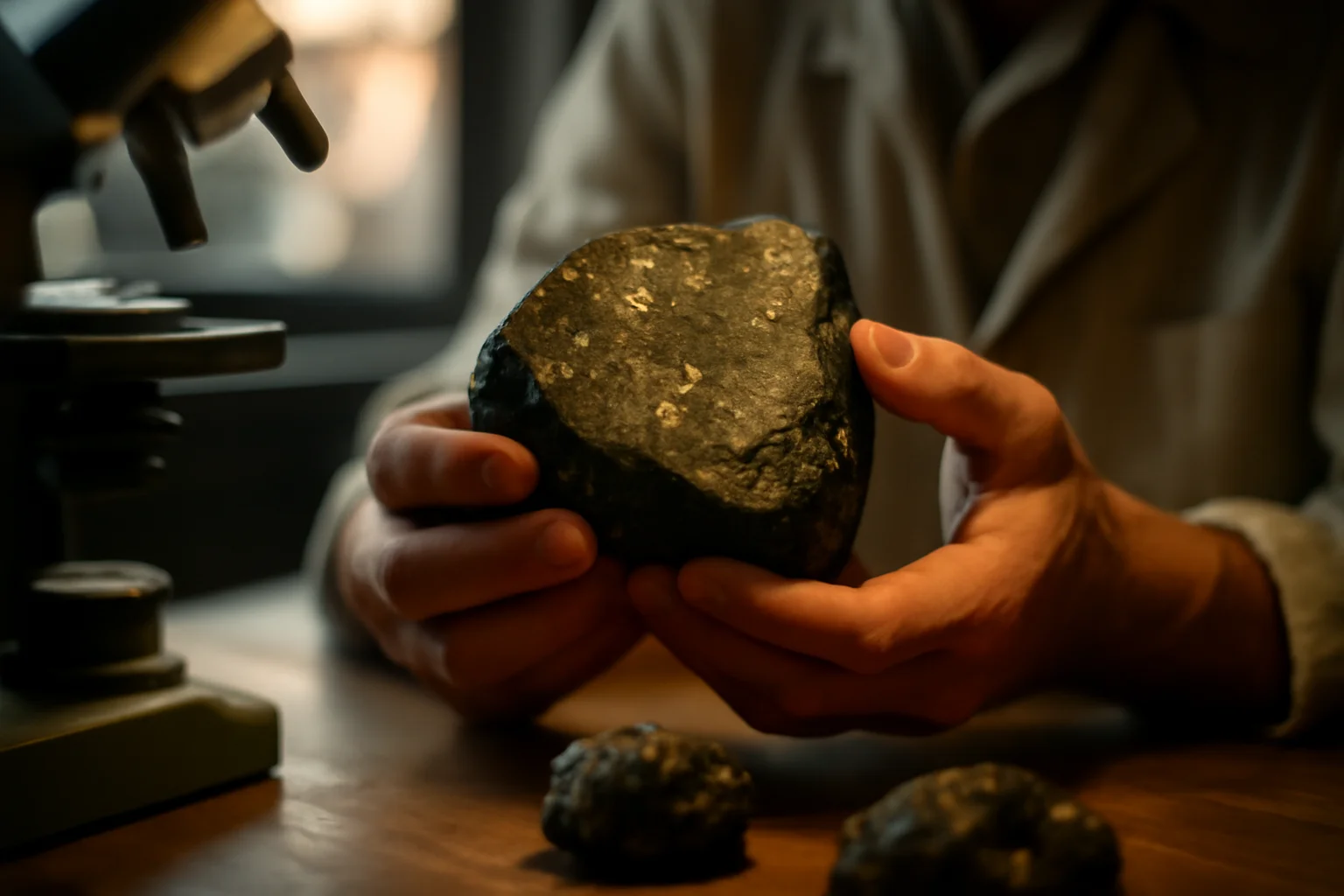
To understand planetary origins, scientists look not only to the stars, but to rocks that fall to Earth from space.Meteorites, particularly chondrites, serve as frozen time capsules, preserving the chemistry of the solar system’s earliest moments.These ancient stones contain crystalline minerals rich in silicon monoxide and other high-temperature compounds formed close to the Sun.Their inclusions, called CAIs, have been precisely dated to more than 4.5 billion years ago, marking the start of planet formation.Each meteorite holds clues about the heat, turbulence, and elemental abundance of the primordial solar nebula.By comparing these records to the chemical signatures detected around HOPS-315, astronomers confirm that the same processes repeat across star systems.Such parallels lend weight to the idea that Earth’s story is not unique, but rather a chapter in a galactic saga of planet building.Chondrites not only reveal conditions near the Sun, but also explain why rocky planets form closer in, while gas and ice giants arise farther out.The leftover debris from this process—asteroids and comets—continues to shape our solar system, occasionally delivering new meteorites for study.In this way, every space rock is a messenger from the dawn of time, offering fresh evidence for cosmic patterns observed light-years away.These “fossils” of planetary formation bring the story full circle, from distant starlight to the stones in our own hands.Meteorites and new discoveries like HOPS-315 combine to illuminate the hidden chapters of our planetary history.
Advertisement
7. Stellar Nurseries and the Search for Other Earths

HOPS-315 is just one star in a vast network of stellar nurseries scattered across the Milky Way.Regions like the Radcliffe Wave—a 9,000-light-year-long ribbon of dense gas—are hotbeds for star and planet formation, giving rise to countless suns and their accompanying worlds.Astronomers target these regions in the hope of catching the brief, formative stages of planetary birth, using the latest telescopes to scan for chemical and thermal signatures.In these cosmic nurseries, gravity triggers the collapse of gas clouds, igniting new stars and spawning protoplanetary disks rich in dust and ices.Each disk is a laboratory, a natural experiment testing how variations in temperature, mass, and chemistry shape the architecture of emerging planetary systems.The discovery at HOPS-315 suggests that the ingredients for planet formation are common, recurring across many environments.Finding another system at the very first stages—like HOPS-315—offers astronomers a powerful “control group” for testing and refining models developed from our solar system alone.These discoveries fuel the search for planets like Earth, pushing science closer to answering the age-old question of how common habitable worlds might be.With every observation, the catalog of “baby solar systems” grows, building a map of the universe’s creative process.Such research has implications not just for astronomy, but for understanding life’s potential in the cosmos.In the coming years, astronomers will continue their quest, hoping to see new planets form and evolve from clouds of gas into worlds of possibility.
Advertisement
8. Behind the Breakthrough
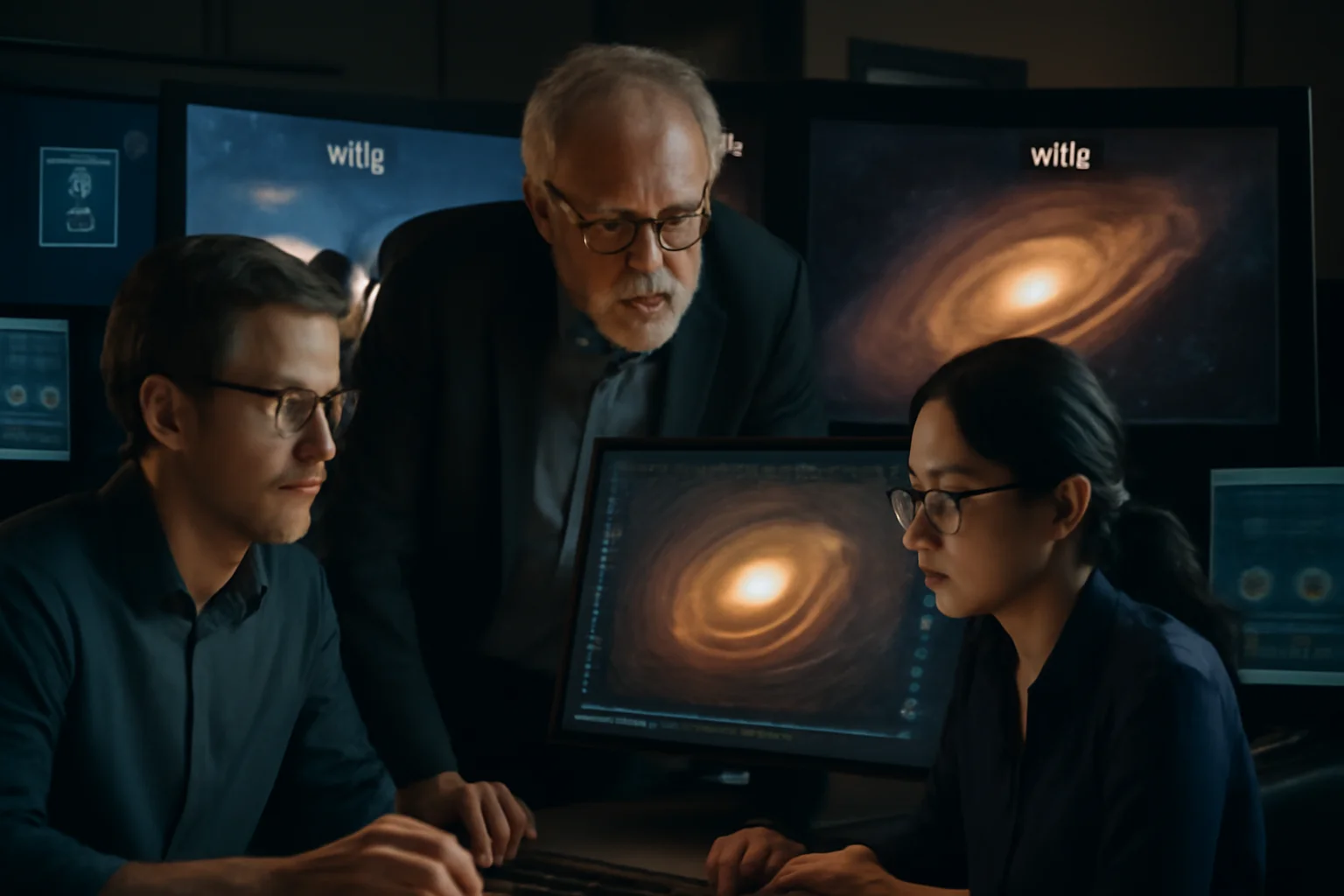
The unveiling of HOPS-315’s protoplanetary secrets is the product of a truly international effort.Researchers from Europe, North America, and Asia joined forces, sharing expertise, resources, and technology to tackle one of astronomy’s most profound questions.Facilities like ALMA and JWST represent decades of investment, international negotiation, and the labor of thousands of scientists and engineers.Such cooperation allowed for observations at multiple wavelengths, creating a detailed, multidimensional portrait of a system taking its first steps toward planetary complexity.Data processing, interpretation, and publication drew on the strengths of diverse teams from Leiden University, Purdue, the University of Michigan, and many other institutions.Each group contributed unique skills, from high-precision spectroscopy to modeling the dynamics of dusty disks.The success of this project demonstrates that planetary science is a global enterprise, advancing on the frontiers of knowledge through shared curiosity and determination.Publicly funded observatories and international organizations like the European Southern Observatory (ESO) make these discoveries accessible to the world.As the findings are published and the raw data released, scientists everywhere can join in refining theories and planning new observations.This spirit of collaboration ensures that the quest to understand planet formation will continue, with each discovery building on the achievements of many.By working together, the world’s astronomers are illuminating the universe’s deepest mysteries, one star at a time.
Advertisement
9. The Future of Planetary Science
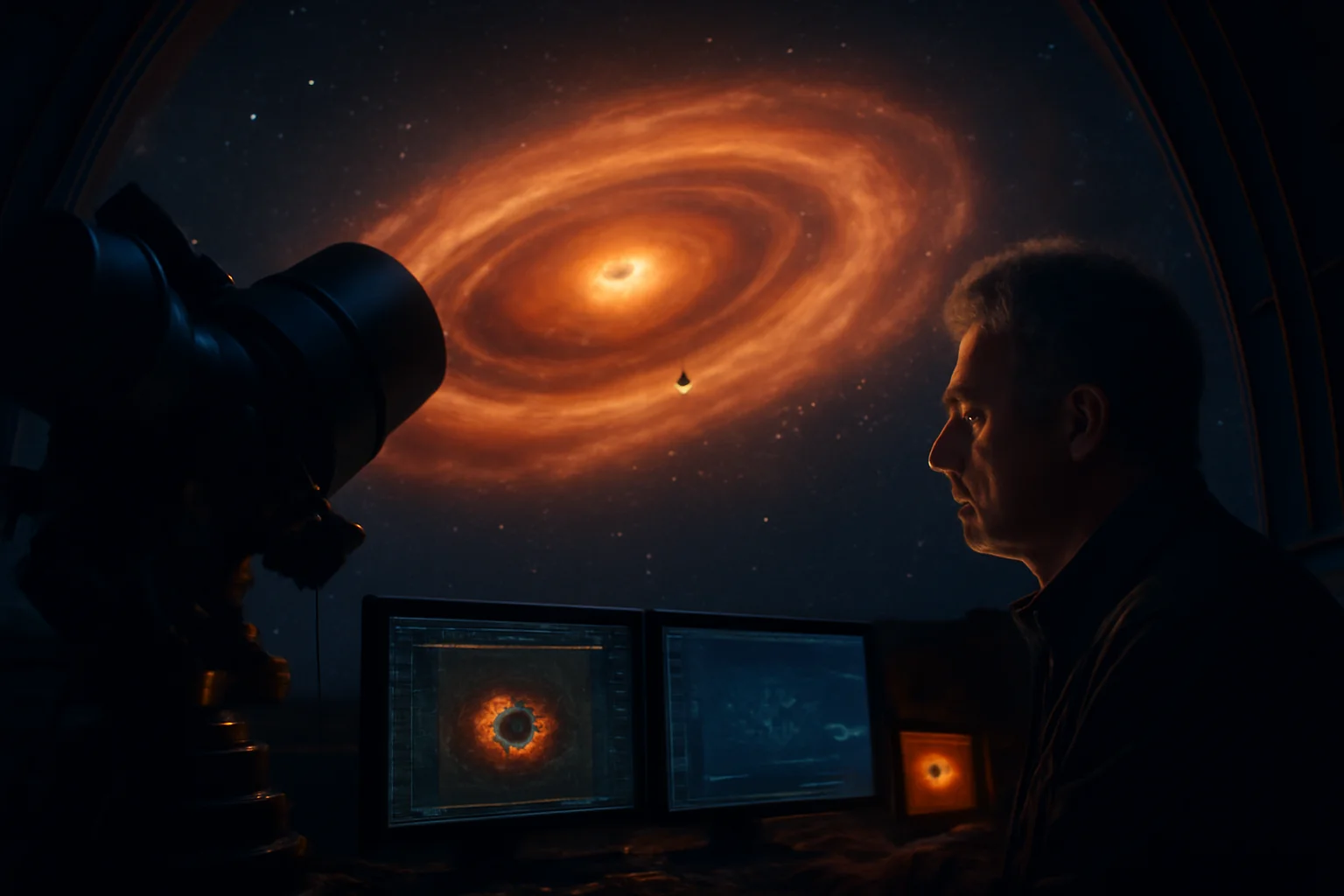
Catching the earliest moments of planet formation has profound implications for our understanding of how worlds are made.For the first time, scientists can anchor theories about planetary origins in direct observation, rather than relying solely on models or ancient meteorites.This breakthrough will shape future research, guiding where and how telescopes search for signs of young planets and the disks that produce them.It offers a new roadmap for interpreting the signatures of chemistry, heat, and motion found in protoplanetary environments.With HOPS-315 as a template, astronomers can now compare other developing systems, looking for patterns and outliers that reveal the diversity of planetary birth.The discovery strengthens the idea that Earth and its neighbors are part of a broader cosmic phenomenon, shaped by universal forces acting in distant galaxies.As new telescopes and missions come online, scientists anticipate a flood of discoveries, each providing another piece of the planetary puzzle.This knowledge may one day help us identify truly Earth-like planets—or even worlds with conditions ripe for life.Ultimately, the real-time study of systems like HOPS-315 moves us closer to answering fundamental questions: How common are planets? How did life begin? Are we alone?The implications ripple far beyond astronomy, touching the origins of life, the search for new homes, and the philosophy of our place in the universe.With every new discovery, planetary science is poised to become not just a field of study, but a source of wonder for all humanity.
Advertisement
10. The Birth of Worlds

The revelation of planet formation around HOPS-315 is just the opening act in a cosmic drama playing out across the universe.As telescopes continue to scan the skies, the process that forged our solar system is seen unfolding again and again, in countless variations.Scientists now have a living laboratory for testing theories, measuring timescales, and tracing the evolution of planets from dust to dynamic worlds.The tools and partnerships built for this research will enable future generations to witness the birth of stars, planets, and perhaps even new forms of life.Each new system discovered will refine our understanding, providing clues about the origins and fate of planets everywhere.HOPS-315 stands as both a symbol and a laboratory, its young disk a model for unraveling the mysteries of planetary genesis.The journey from stardust to planet is universal, an ancient dance choreographed by gravity, chemistry, and time.In the light of newborn stars, we see our own story reflected—a reminder of how fragile, precious, and interconnected our cosmic origins truly are.The quest to observe the beginnings of worlds is just beginning, promising a future rich with discovery and revelation.With eyes on the sky and data in hand, astronomers stand ready to chronicle the universe’s ongoing act of creation, turning the unknown into knowledge for all.
Advertisement
Advertisement
You May Also Like

Coca-Cola Will Launch a Version of Coke With Cane Sugar in the U.S. This Fall
That's pretty good, right?

Shia LaBeouf and FKA Twigs Reach Settlement in Sexual Assault and Battery Lawsuit
This was still going on?




